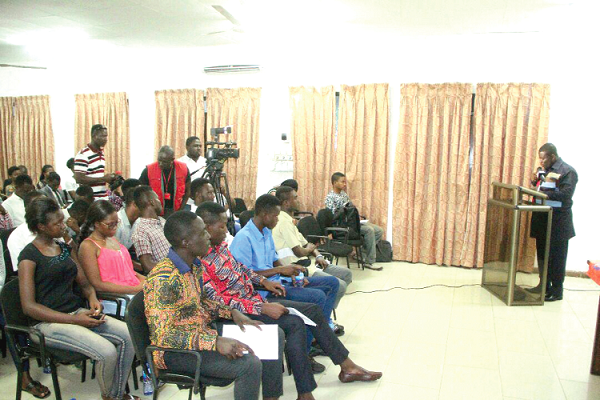
NADMO expresses concern about structural development
The National Disaster Management Organisation (NADMO) has expressed concern about hazardous structural development in fault zones or disaster-prone areas in Accra.
Advertisement
“People are developing along fault lines in wanton disregard for caution, as well as future consequences,” the Director-General of NADMO, Mr Eric Nana Agyemang Prempeh, said, citing Accra’s McCarthy Hills and the Weija areas as examples of fault zones.
At a ceremony to mark International Day for Disaster Reduction (IDDR) at the University of Ghana last Friday, Mr Prempeh said, "Many buildings are springing up in the McCarthy Hills and Weija areas with rapidity as never before."
"The structural integrity of many of such buildings is bankrupt. Some even block accessible roads. Others embark on dangerous activities in the area that further undermine the stability of buildings," he added.
He, therefore, underscored the need for NADMO and the other stakeholders to act appropriately to prevent any possible disaster and dangers.
IDDR
Countries around the globe observed October 13 as International Day for Disaster Reduction on the theme: “Home Safe Home.”
The day was designated by the United Nations General Assembly, in recognition of the efforts that individuals and communities had been undertaking to reduce their risk to disasters and increase the awareness of disaster risk reduction.
Ghana marked the day as disasters, many of which were preventable, continued to be experienced in the country.
The University of Ghana event was co-organised by the University’s Disaster Risk Reduction Club and NADMO.
Indiscipline
Mr Prempeh explained that the major cause of the country’s vulnerability to disasters was indiscipline.
“We show indiscipline in our construction practices. People build in waterways, not that they do not know the consequences. They throw rubbish anywhere, including water bodies,” he said.
The director-general also touched on planning schemes that were thrown overboard by builders, leading to situations where roads and streets were blocked, making it difficult for emergency personnel to respond effectively during emergencies.
He made reference to the recent mudslide in Sierra Leone and said the hillside collapse that led to many deaths in Freetown “should make all of us sober.”
Recent events
Mr Prempeh recounted some of the recent events that resulted in deaths and injuries and other forms of hardships to the people.
Events recorded this year include a heavy rainstorm which caused a huge tree at the Kintampo Waterfalls to fall on swimmers, claiming 40 lives.
Others are the outbreak of army worm infestation nationwide and centipede attack, wreaking havoc on farms and threatening food security as farmers continue to count their losses, as well as the gas explosion at the Ghana Household Utilities Manufacturing Company in Sekondi-Takoradi which caused injuries to many people.
“The nation also witnessed a horrible spectacle of gas explosion on Saturday, October 7, 2017. This explosion claimed the lives of seven people and visited varying degrees of injury on 132 people.
The incident affected 44 houses and more than 90 cars were burnt. In all, 359 people were affected,” he said, adding that the October 7 gas explosion showed a woeful lack of knowledge of fire dynamics on the part of the populace.
NADMO initiatives
Explaining some of the initiatives NADMO was taking towards disaster prevention, the director-general said next year, the organisation would roll out a programme dubbed ‘’Catch them young,” which would involve a massive campaign to incorporate disaster risk reduction in the school curricula and in the built environment.
Schools will be encouraged to have disaster reduction committees and some teachers would be trained to lead this agenda in the schools.
He said NADMO had now been empowered to issue disaster risk reduction compliant certificate on buildings, including those having public facilities. “I wish to stress that installation of fire hydrants will be a major requirement for awarding the certificate,” he added.
New Act
NADMO is currently operating under a new Act, Act 927 of 2016.
Following from that, the director-general said a legislative instrument was being developed to implement the act more fully.
The regulations would detail more on what would be required of individuals and organisations with respect to disaster risk management.
Mr Prempeh said NADMO also intended to collaborate with all private organisations, ministries, departments, agencies, metropolitan, municipal and district assemblies and request them to establish disaster risk reduction desks in their establishments.
He said with the new law, NADMO now had the power to demolish buildings that were found to be hazardous or in dangerous locations and those that put the public in danger.




